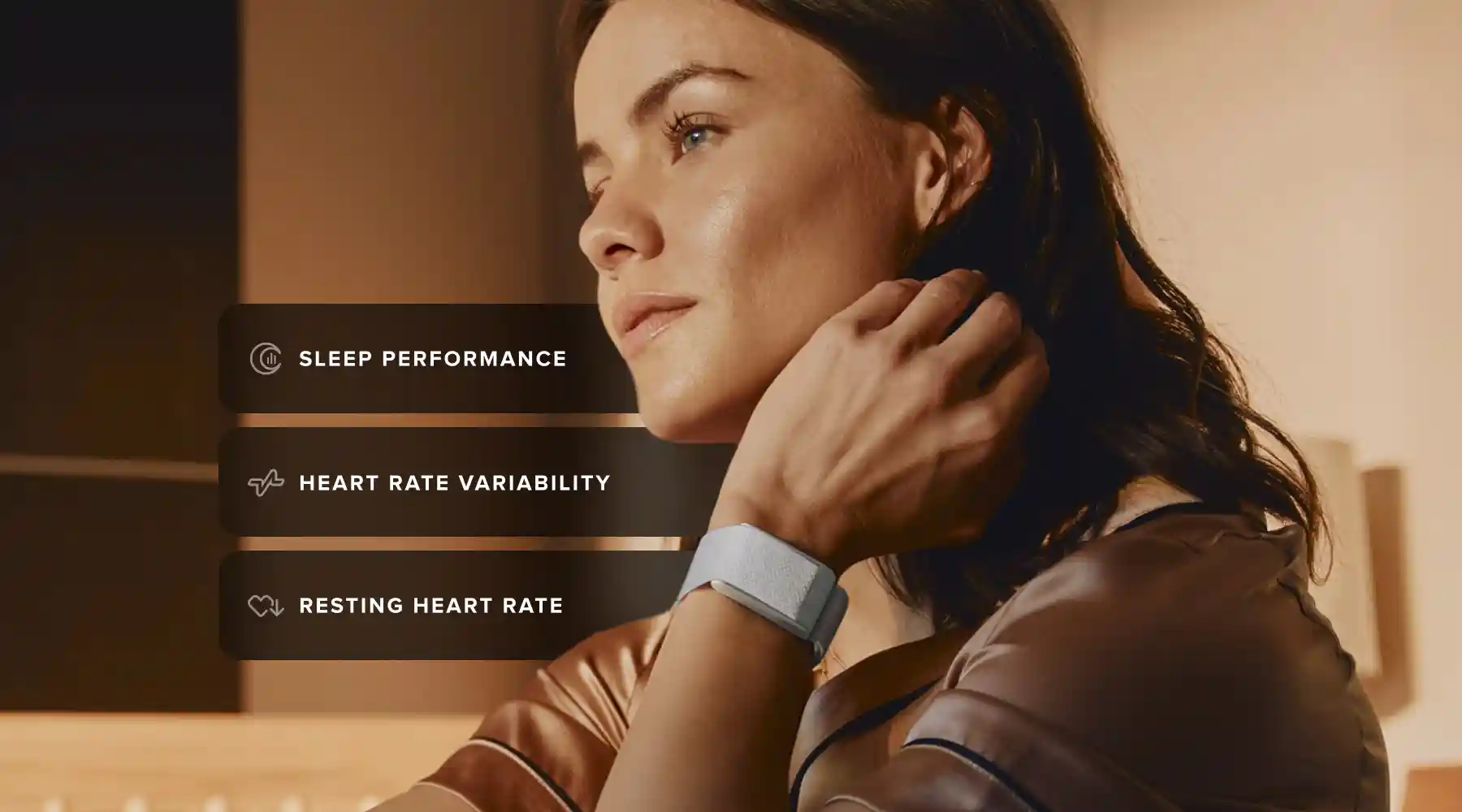Topics
- Article
- Research Studies
- Mental Health
- Health & Wellness
What WHOOP Data Tells Us About Sleep, Recovery, and Mental Health

If you’ve ever noticed you feel more anxious after a night of broken sleep, or that stress lingers in your body long after a tough day, you’re not imagining it.
In a peer-reviewed study published in the Journal of Medical Internet Research, WHOOP researchers analyzed over 300,000 monthly mental health surveys from more than 170,000 WHOOP members over 13 months, linking them to 7.9 million days of biometric data. The goal? To better understand how your physiology, especially sleep patterns, resting heart rate (RHR), and heart rate variability (HRV), relate to stress, anxiety, and depression.
The findings reinforce what many people intuitively feel: our bodies and minds are in constant conversation. And now, we have the data to prove it.
The big picture: your physiology reflects how you feel
This study looked at three key self-reported mental health markers:
- Stress (via the Perceived Stress Scale)
- Anxiety (via the GAD-2 survey)
- Depression (via the PHQ-2 screening tool)
Then researchers compared those results to WHOOP data like:
- Sleep timing and consistency
- Heart Rate Variability (HRV)
- Resting Heart Rate (RHR)
- Physical activity (based on heart rate zones)
WHOOP members who showed more consistent sleep, higher HRV, and lower RHR were more likely to report lower stress, anxiety, and depression symptoms.
Sleep is more than hours, it’s timing
When it comes to mental health, sleep consistency may matter just as much as duration.
People who went to bed and woke up at roughly the same time each day, regardless of total sleep time, reported better mental health outcomes across the board. In contrast, higher variability in sleep and wake times aligned with poorer psychological well-being .
Your Recovery Score tells more than you think
Higher HRV and lower RHR were both associated with healthier reports of mental well-being.
HRV is one of the clearest indicators of your body’s ability to adapt to stress, while RHR reflects your cardiovascular efficiency. In this study, these two metrics were consistently aligned with lower levels of anxiety, depression, and perceived stress, both across individuals and within the same person over time.
Reports of Stress predict physiological changes
We found that when WHOOP members reported feeling stressed, it was often followed by noticeable changes in their physiological metrics, including:
- Increase in RHR
- Decrease in HRV
- More variability in sleep and wake times
These findings suggest that your subjective reports of stress could serve as an important predictor of physiological disruptions. WHOOP data can therefore serve as an important indicator of when you’re experiencing stress.
A way to care for your whole self
Mental health isn’t just about what’s happening in your mind — it’s reflected in your body too. And that’s where WHOOP becomes an essential tool for self-awareness and self-care.
This study found that better sleep habits, stronger recovery signals, and consistent routines were all tied to better mental health. That means WHOOP isn’t just helping you train harder, it’s helping you understand how you’re doing, holistically.
Here’s how WHOOP helps you support both body and mind:
- Sleep Planner helps build healthier bedtime routines and better rest
- Recovery Scores, HRV, and RHR trends reveal how your body is adapting to life stressors
- The Journal helps you log and track mood, stress, and habits — so you can connect how you feel with how your body responds
- Stress Monitor observe your stress level in real time
- Weekly Plan set goals to keep yourself accountable across behaviors, activities, and habits
Whether you’re feeling great or going through a challenging stretch, WHOOP gives you the insights to recognize patterns, make small adjustments, and feel more in control of your well-being.
Want to see how your physiology reflects how you feel?